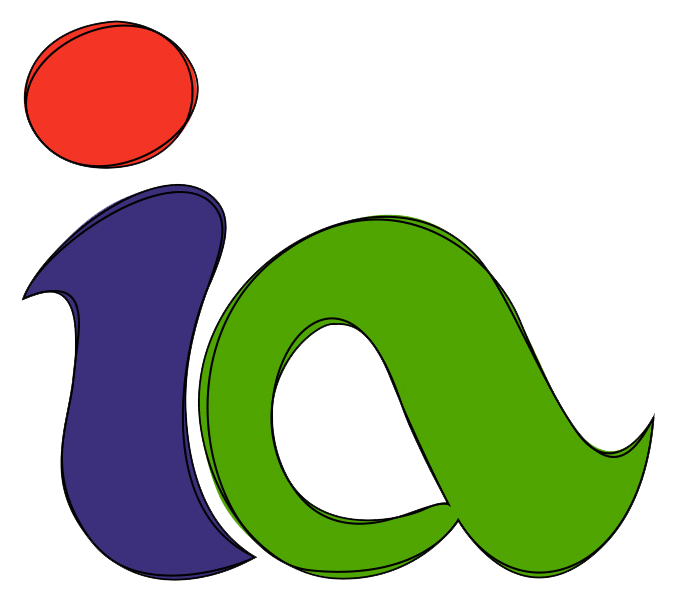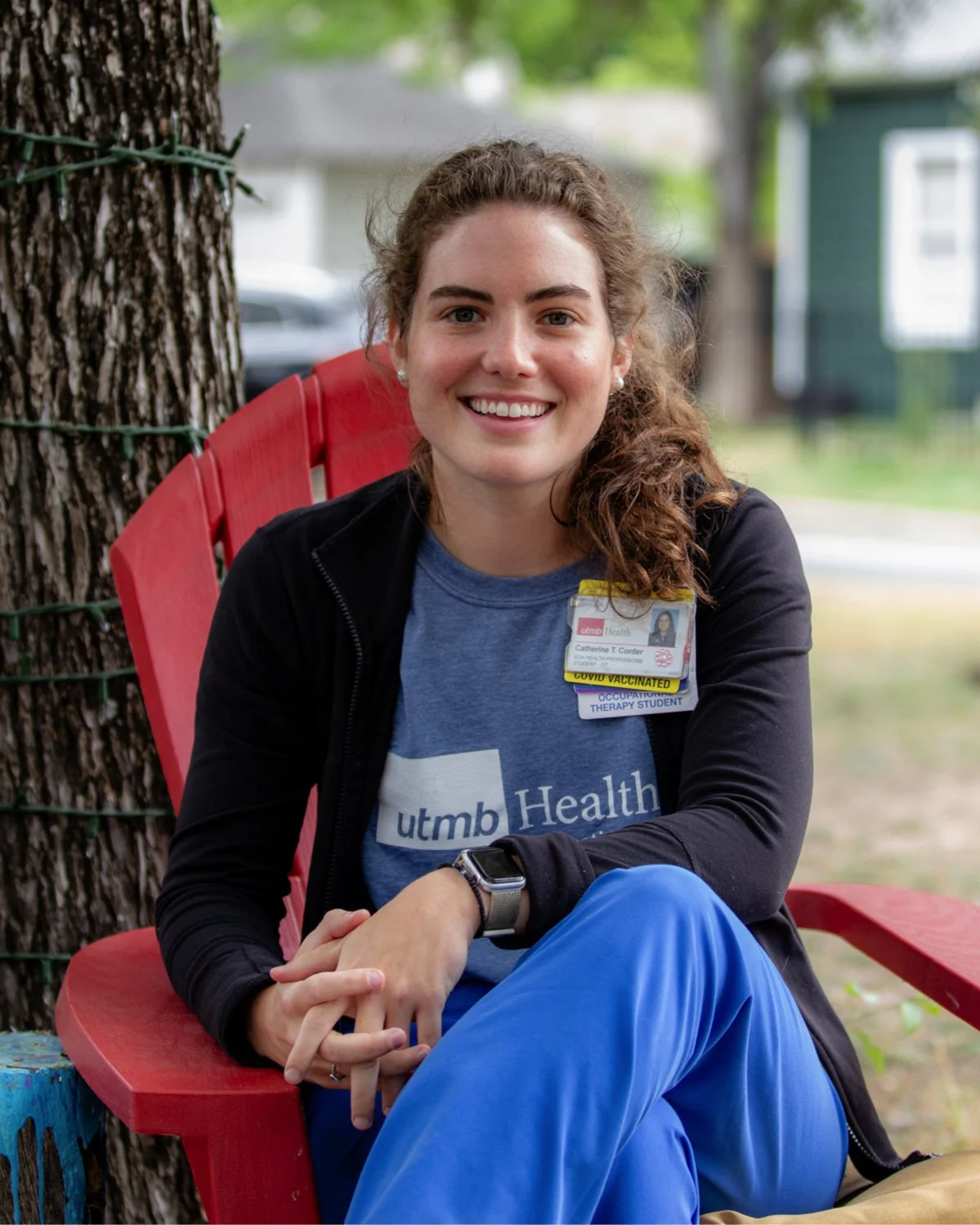An OT in Imagine Art’s Midst
Historically, Occupational Therapy (OT) was there to “improve self-esteem, employment potential, and promote better health.” Dr. Herbert Hall, 1916
“I am an advocate for using crafts to redirect thought, strengthen bodies and regain confidence.” Susan Cox Johnson, Designer and Arts & Crafts Teacher and co-founder of the National Society for the Promotion of Occupational Therapy, 1917
OT is Working with Imagine Art Artists on Job-Readiness Skills
(photo David Carrales)
Catherine T. Corder, OTS, a native of Baton Rouge, Louisiana, was interviewed for this article on April 19, 2022.
I think Imagine Art is a wonderful place where people can go to and be productive by making art. Not only make it, but sell it. The artists are going through some of the same struggles and challenges as everybody else.
They have the opportunity to go on all those field trips. One of the first field trips I was here for was to the Austin Main Public Library. Shon did not have a library card, which is something people often take for granted.
I helped walk Shon through the process of getting a library card: filling out his name, address, etc. He was able to get a library card and check out a book that day. It was a landscape book because Shon likes to do landscapes. Watching that whole process was kind of a cool experience.
The Capstone Project
As a PhD candidate in Occupational Therapy from UTMB in Galveston, Catherine T. Corder provides job-readiness and daily living skills to Imagine Art clients. Recognizing their needs and helping artists achieve their immediate goals is her priority.
She and her classmates at UTMB are part of a Capstone Project. The goal is to share the culmination of everything they have learned in their OT schooling, including clinical experiences. Then they will tie their collective knowledge together into the Capstone Project which may benefit community members and nonprofit organizations.
(A Capstone Project is a multifaceted body of work that serves as a culminating academic and intellectual experience for students.)
Her Capstone advisor, Professor Armstead, sent out a questionnaire asking about her UTMB students’ interests and experience. The professor then contacted a number of sites across Texas and placed OT interns where she thought they would fit well. That’s how Catherine ended up at Imagine Art.
She and her classmates have been tasked with writing a huge paper that details everything about their experiences. Her part is to explain the background and write an introduction of why her selected project at Imagine Art is important and necessary, and the methods used to advance the project. Towards the end of her 14 week stay the focus will move to results: did the project work, how was it received, and what can be improved on in the future.
Job Readiness Cues
(Photo David Carrales)
In order to assist clients with job-readiness, Catherine is working with the artists 1-on-1 to develop a visual set of cue cards. She has made a test run of the cards— palm size computer generated laminated cards on a ring.
For example, John Molina is teaching how to make mosaics. The first step is having cue cards on the materials he has to gather: wood, glass pieces, and glue. Catherine is meeting with an artist a week, helping that individual make a personalized set of cue cards that will assist in presentations.
Many of the artists are in the job-readiness program called Art-a-Gogh-Go. When they are out in the community teaching, they can use the reference cards as reminders, in case they are forgetting something.
Challenges for Catherine at IA
She recognizes that through Imagine Art’s skill-building activities, artists are able to do their art in a therapeutic way. By doing things that they love or want to do, strengthens them. Clients are then confident to act independently in their daily lives and through their daily occupations.
The variety of issues that artists have at Imagine Art is a significant challenge, says Catherine. Some artists are deaf, some have cerebral palsy, a lot of artists are IDD, and there are two blind ceramists. After taking everything into consideration, the challenge for Catherine is finding ways for artists to complete their art using the methods they want to and giving them the support they need to create their art. In the studio and on field trips, she has to quickly adapt and react to situations on the spot.
Fitting In
Catherine comes into the Imagine Art Studio five days a week from 9am-4pm. When she is at her table in the painting room, you will find her typing away on her laptop or interviewing artists. She attends as many twice-a-week field trips as she can, assisting artists and supporting their efforts. With her warm, infectious smile, Catherine fits-in nicely with the artists, staff and AmeriCorps members.



